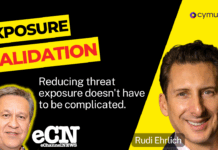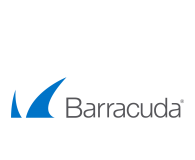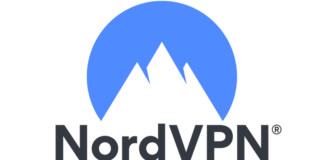By Media Sonar
Organizations are rapidly expanding their digital presence to build customer relationships, improve visibility, and increase sales. As they do this, they introduce new types of risk that can negatively impact their brand value and customer relationships.
Brand protection has been around for decades, and the underlying focus of safeguarding the brand’s value has remained the same. However, there has been a shift in how risks manifest, the media in which they occur, and how they can be mitigated. This article explores how organizations can manage the brand damage that arises from data breaches, disinformation, and online threats of violence.
1. Data Breaches
While it’s impossible to know the actual number, 45% of US companies experienced a data breach in the past year. Despite the high prevalence of data breaches, customers continue to share more information with brands than ever before. As technology continues to work its way into every facet of business and threat actors expand their capabilities, data breaches will become even more relevant to organizations.
What are the impacts of a data breach?
While the focus tends to be on the million-dollar lawsuits, higher cyber insurance premiums, and other immediate expenses – the actual cost of a data breach is more concrete than that. With the average data breach cost hitting $4.35 million in 2022, it is understandable that the focus is typically on the dollar value. However, the more significant concern should be the long-term brand damage a data breach can cause. Regardless if it is a global enterprise or a mid-size organization, 65% of customers lose trust in a business in the event of a breach, and 85% would stop engaging with the organization entirely.
How should organizations manage data breaches?
Organizations must demonstrate that they are taking a proactive approach to safeguarding company and customer information. In addition to traditional security controls like firewalls and endpoints, companies must look beyond network walls and account for vulnerabilities and exposures across the social, surface, deep and dark web. Solutions like Media Sonar Digital Risk Assessments offer a cost-effective way for organizations to detect leaked information and act on indicators of data breaches where adversaries and brands operate.
2. Disinformation
While disinformation campaigns previously focused on spreading and advancing social and political ideologies, threat actors are now using the same creation and distribution mechanisms to target corporations. The manner in which people communicate across online channels allows disinformation to spread in ways that make it nearly impossible to contain.
What are the impacts of disinformation?
The pervasive spread of inaccurate content and false news can erode social and customer trust and directly impact purchasing decisions. So much so that 85% of consumers would not buy a product from a company associated with disinformation. Even if an organization hasn’t made a mistake, it is how the world perceives them that can tip the scales in favor of growth or toward waning customer trust.
With 54% of business leaders predicting the effects of disinformation to be worse in 20 years, it’s clear the risk of disinformation is not going away anytime soon.
How should organizations manage disinformation?
When it comes to managing disinformation, there are a few challenges that organizations must consider:
- The places where a brand exists online is broad, further complicating the ability to detect disinformation.
- Identifying the original source of disinformation is nearly impossible.
- Trying to control what is posted on domains not owned by the organization is impractical.
So how can organizations manage disinformation?
The first step is acknowledging that disinformation goes beyond marketing and PR. Understanding the security implications that can arise from disinformation and other brand attacks is critical.
The next step is deploying solutions that identify false content associated with your brand and implementing internal processes that manage disinformation if it does arise.Media Sonar’s Digital Risk Assessments make it easier for organizations to uncover disinformation. We use our Web Intelligence platform in conjunction with our expert analysts to deliver a report that identifies disinformation and other reputationally damaging content related to your brand. We rate the level of severity of the identified risks and provide remediation recommendations.
3. Online Threats of Violence
While physical security has traditionally brought cameras, guards, and locked gates to mind, today’s digital world has forced organizations to stay aware of violent opinions and posts related to their brand online. Despite much discussion around the intersection of physical and digital security in the last decade, the security skills gap has made it difficult for many organizations to address this convergence effectively.
What are the impacts of online threats of violence?
Ultimately, the most significant impact of online threats of violence is the physical danger they put people in. From a brand’s perspective, a violent crisis can significantly impact employee and customer trust. Significant brand and financial damages arise when people do not feel safe engaging and purchasing in a company’s physical and digital environments.
How should organizations manage online threats of violence?
The brand damage that can arise after violent incidents often comes down to the organization’s measures before the event and, more importantly, how they respond.
A proactive step that companies can take is leveraging intelligence from social, surface, deep, and dark web sources to understand where violent conversations about their brand are happening. While many companies know the value of including a digital element in their physical security strategy, the shortage of cyber and physical security personnel has made it challenging to identify when online threats are legitimate. Even with unlimited staffing, it would be impossible to manually monitor, verify and research the number of data points across these channels.
Organizations are turning to Web Intelligence solution providers like Media Sonar to gain awareness of violent threats associated with their brands online. With Media Sonar Digital Risk Assessments, expert analysts apply violence-based keywords against your brand’s digital footprint to surface threats of violence. We provide a report that scores risk and includes remediation recommendations to help you make the best safety decisions for your company.
Brand Protection Moving Forward
Organizations that are unable to demonstrate they are taking steps to address the new era of brand protection run the risk of long-term brand damage, higher cyber insurance premiums, revenue loss, and even physical danger.
Media Sonar helps organizations address the risks that arise where customers engage, the brand is built, and business is won or lost – the social, surface, deep and dark web.















